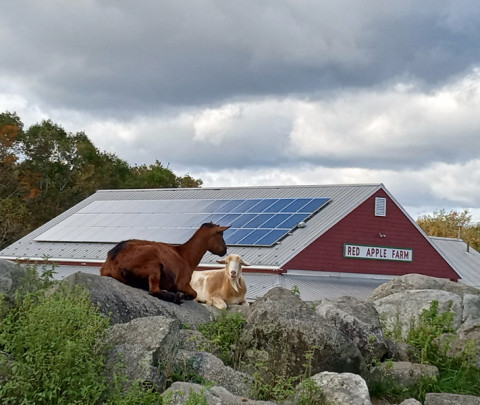Watched Like a Hawk
- Visit North Central
Each autumn, birdwatchers, naturalists, and travelers venture to Johnny Appleseed County to experience one of the Northeast’s finest birding spectacles: The annual migration of hawks and raptors.
On prime viewing days, observers are rewarded with the pageant of hundreds or thousands of birds flying over the region’s mountains, hills, and ridges.
Each spring, the hawks fly north to breed in northern North America. After raising their young during the warm months, they head back south to overwinter in Central America at the end of summer and autumn. In terms of sheer numbers, the peak time for viewing is mid- to late September, when broad-winged hawks may be seen flying in large flocks known as ‘kettles’ that consist of hundreds, or even thousands of birds. The migration season continues into October and November, when some of the larger and rarer species, including bald and golden eagles, goshawks, and northern harriers are on the move.
Timing, along with patience and a bit of luck, are the keys to a memorable viewing experience. The best viewing is generally on partly cloudy days with a moderate to light wind from the north as the currents help the birds on their southbound journey. When the wind is blowing against them, they’ll usually hunker down and wait for more favorable conditions.
Great Sites Abound
North Central Massachusetts is home to some of the Northeast’s finest hawk watch sites. Wachusett Mountain in Princeton has long been recognized as one of New England’s best viewing areas — on some days, more than 10,000 birds have been counted by observers! The recently-renovated auto road offers easy access to the summit observation area, and there are many hiking trails (see page 13 for more information).
Near the base of Wachusett Mountain is Brown Hill, which is part of the Massachusetts Audubon Society’s Wachusett Meadow Wildlife Sanctuary in Princeton. From the nature center, it’s an easy walk across the North Meadow to the summit trail, where a short climb leads to the hilltop and its open views. The sanctuary is at the end of Goodnough Road off of Route 62 west of the town center. The Sanctuary has a family-friendly hawk watch scheduled for September 7 and an adult program on September 14; more details are available in the Calendar section of this Guide. Check their website (www.massaudubon.org), too, for more information about hawk watch programs.
Another mountain with excellent viewing is Mount Watatic in Ashburnham and Ashby. Though a moderately steep hike on the Midstate and Wapack Trails is necessary to reach its open summit ledges, the rewards include smaller crowds, outstanding scenery and fine views of the birds as they navigate along the adjacent ridge of the Wapack Mountains. The entrance is on Route 119 in Ashburnham, just west of the junction with Route 101.
Further west is Round Top Hill at the Bearsden Conservation Area in Athol. A moderately steep but short half-mile-long trail leads to the summit, where an observation deck offers views to Wachusett Mountain and Gardner. This lesser-known preserve also has several miles of hiking trails that lead to a variety of features in the watershed of the Millers River. The entrance is on Bearsden Road off of Route 2A east of Athol center.
Not Up for a Climb?
A lower but still productive viewing area is the Barre Falls Dam recreation area off of Route 62 in Hubbardston. The large open fields offer long views across the ridge of the Ware River Valley. The reservation also offers access to the dirt roads of the Ware River Reservation, which lead to a variety of habitats including wetlands, meadows, and forests.
When watching hawks, be sure to bring binoculars or a spotting scope, as the birds are often high above in the sky. Other recommended items include sunscreen and sunglasses, adequate clothing, a camera, compass, and field guide. A notebook is a great way to keep track of the birds you see and help plan subsequent trips. There are several useful Internet resources, including the NorthEast Hawk Watch (www.battaly.com/nehw) and Worcester Polytechnic Institute’s Central Massachusetts Bird Sightings (http://users.wpi.edu/~rsquimby/birds/), that are updated regularly throughout the season.
— Article/Photo by John Burk








